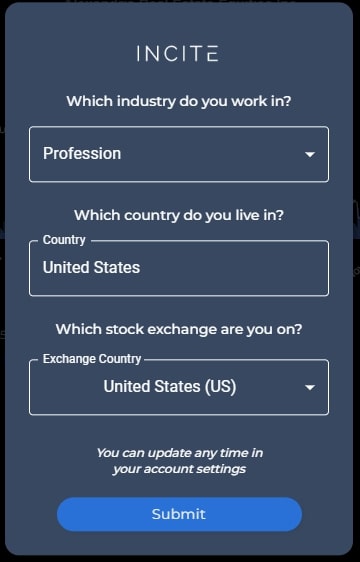20 Best Suggestions For Picking AI Stock Trading Sites
20 Best Suggestions For Picking AI Stock Trading Sites
Blog Article
Top 10 Suggestions For Looking At Ai And Machine Learning Models On Ai Trading Platforms
In order to get accurate information, accurate and reliable You must test the AI models and machine learning (ML). Models that are not properly designed or overhyped can lead financial losses and incorrect predictions. Here are 10 top tips to evaluate the AI/ML platform of these platforms.
1. The model's purpose and approach
The objective clarified: Identify the purpose of the model, whether it is used for trading at short notice, putting money into the long term, sentimental analysis, or a risk management strategy.
Algorithm disclosure: Check whether the platform is transparent about the algorithms it uses (e.g. neural networks or reinforcement learning).
Customization: See whether the model could be tailored to your specific investment strategy or risk tolerance.
2. Measuring model performance metrics
Accuracy: Check the model's prediction accuracy. But don't rely exclusively on this measure. It could be misleading on financial markets.
Recall and precision - Assess the model's capability to recognize genuine positives while minimizing false positives.
Risk-adjusted gain: See if the predictions of the model can lead to profitable transactions, after taking into account the risk.
3. Make sure you test the model using Backtesting
Historical performance: Backtest the model using historical data to see how it would have been performing in previous market conditions.
Testing using data that isn't the sample is crucial to prevent overfitting.
Scenario analyses: Compare the performance of your model under different market scenarios (e.g. bull markets, bear markets, high volatility).
4. Check for Overfitting
Overfitting: Look for models that perform well with training data, but not so well when using data that is not seen.
Regularization techniques: Find out whether the platform uses methods like normalization of L1/L2 or dropout to stop overfitting.
Cross-validation (cross-validation) Verify that the platform is using cross-validation to assess the model's generalizability.
5. Assessment Feature Engineering
Look for features that are relevant.
Features selected: Select only those features which are statistically significant. Avoid redundant or irrelevant information.
Dynamic features updates: Check whether the model adjusts with time to incorporate new features or changes in market conditions.
6. Evaluate Model Explainability
Interpretability (clarity) Clarity (interpretation): Make sure to verify that the model is able to explain its predictions clearly (e.g. importance of SHAP or importance of features).
Black-box Models: Be cautious when platforms employ complex models without explanation tools (e.g. Deep Neural Networks).
User-friendly insights: Check if the platform offers actionable insights in a form that traders can comprehend and apply.
7. Examining the Model Adaptability
Market shifts: Determine whether the model is able to adapt to market conditions that change (e.g. changes in regulations, economic shifts or black swan occasions).
Continuous learning: Check if the platform continuously updates the model with new information. This can improve performance.
Feedback loops: Make sure the platform incorporates feedback from users as well as real-world results to help refine the model.
8. Check for Bias and fairness
Data biases: Make sure that the data for training are accurate and free of biases.
Model bias - See if your platform actively monitors, and minimizes, biases in the model predictions.
Fairness - Make sure that the model you choose to use isn't biased in favor of or against particular sectors or stocks.
9. Calculate Computational Efficient
Speed: Check whether your model is able to generate predictions in real time or with minimal delay, particularly when it comes to high-frequency trading.
Scalability Test the platform's capacity to handle large data sets and users simultaneously without performance degradation.
Resource usage: Check if the model uses computational resources effectively.
Review Transparency & Accountability
Model documentation: Make sure that the model platform has complete documentation about the model's design, the process of training and its limitations.
Third-party audits : Verify if your model was audited and validated independently by third parties.
Error Handling: Verify whether the platform is equipped with mechanisms that identify and correct mistakes in models or failures.
Bonus Tips
User reviews: Conduct user research and research cases studies to evaluate the performance of a model in the real world.
Trial period - Use the demo or trial for free to test out the model and its predictions.
Customer support: Ensure your platform has a robust support for technical or model issues.
By following these tips you can evaluate the AI/ML models used by stock predictions platforms and ensure that they are reliable as well as transparent and linked with your goals in trading. Check out the recommended ai for stock trading blog for blog info including ai for stock trading, best AI stock trading bot free, ai chart analysis, AI stock trading bot free, ai for stock predictions, ai for stock trading, ai chart analysis, market ai, best ai trading app, trading with ai and more.
Top 10 Ways To Evaluate The Scaleability Ai Analysis Of Trading Platforms And Stock Prediction
It is essential to determine the capacity and performance of AI-driven trading and stock forecasting platforms. This will guarantee that they are able to handle growing data volumes, market complexity, and demands from users. Here are 10 top tips on how to assess scalability.
1. Evaluate Data Handling Capacity
Tips : Find out whether the platform has the capability to process and analyze large data sets.
Why: A platform that is scalable must be capable of handling the ever-growing volumes of data with no degradation in performance.
2. Test Real-Time Processing Skills
Check out how well your platform handles streaming data in real time including live stock quotes or breaking news.
What's the reason? The analysis in real-time of trading decisions is vital, as delays can lead you to missing opportunities.
3. Check the Cloud Infrastructure for Elasticity
Tip. Check if the platform uses cloud-based infrastructure, such as AWS, Google Cloud and Azure, which can expand resources according to demand.
The reason: Cloud platforms are elastic and they can be scaled up or down in response to the demand.
4. Algorithm Efficiency
Tip: Assess the computational efficiency (e.g. deep-learning or reinforcement learning) of the AI models used for prediction.
Why: Complex algoriths can consume a lot of resources Therefore, the ability to optimize these algorithms is vital for scalability.
5. Learn more about Parallel Processing and Distributed Computer Systems
TIP: Make sure to check whether the platform is using the frameworks of parallel processing or distributed computing frameworks.
What are they: These technologies facilitate faster data processing and analysis across multiple nodes.
Examine API Integration. API Integration.
TIP : Make sure your platform integrates with other APIs, such as market data providers or brokerage APIs.
The reason: seamless integration means the platform can adapt to the latest information sources and environments for trading.
7. Analyze User Load Handling
You can simulate users and see how the platform responds.
The reason is that a platform that is scalable should be able to keep up with performance even as the number of users increases.
8. Evaluate Model Retraining and Adaptability
Tip: Evaluate how frequently and efficiently AI models are being trained with the help of new data.
The reason: Markets change, and models need to be able to adapt rapidly to keep their the accuracy.
9. Check for Fault Tolerance & Redundancy
Tips. Check that your platform has failover systems and redundancy for hardware orsoftware failures.
Why: Trading can be expensive Therefore the ability to handle faults and scale are vital.
10. Monitor Cost Efficiency
TIP: Take into consideration the cost of scaling your platform. Consider cloud resources such as storage of data and computing power.
What is the reason? Scalability shouldn't be at the expense of insufferable costs. Therefore, it is crucial to strike a fair balance between cost and performance.
Bonus tip: Future-proofing
Make sure the platform is able to incorporate advanced technology (e.g. quantum computing and advanced NLP) and is able to adjust to regulatory changes.
If you focus on these aspects it is possible to evaluate the scalability of AI stock prediction and trading platforms, making sure that they are reliable, efficient and ready for future growth. Read the most popular ai trading tool for more info including ai in stock market, ai options, ai share trading, invest ai, ai share trading, ai copyright signals, ai investment tools, chart ai trading, AI stock analysis, how to use ai for stock trading and more.